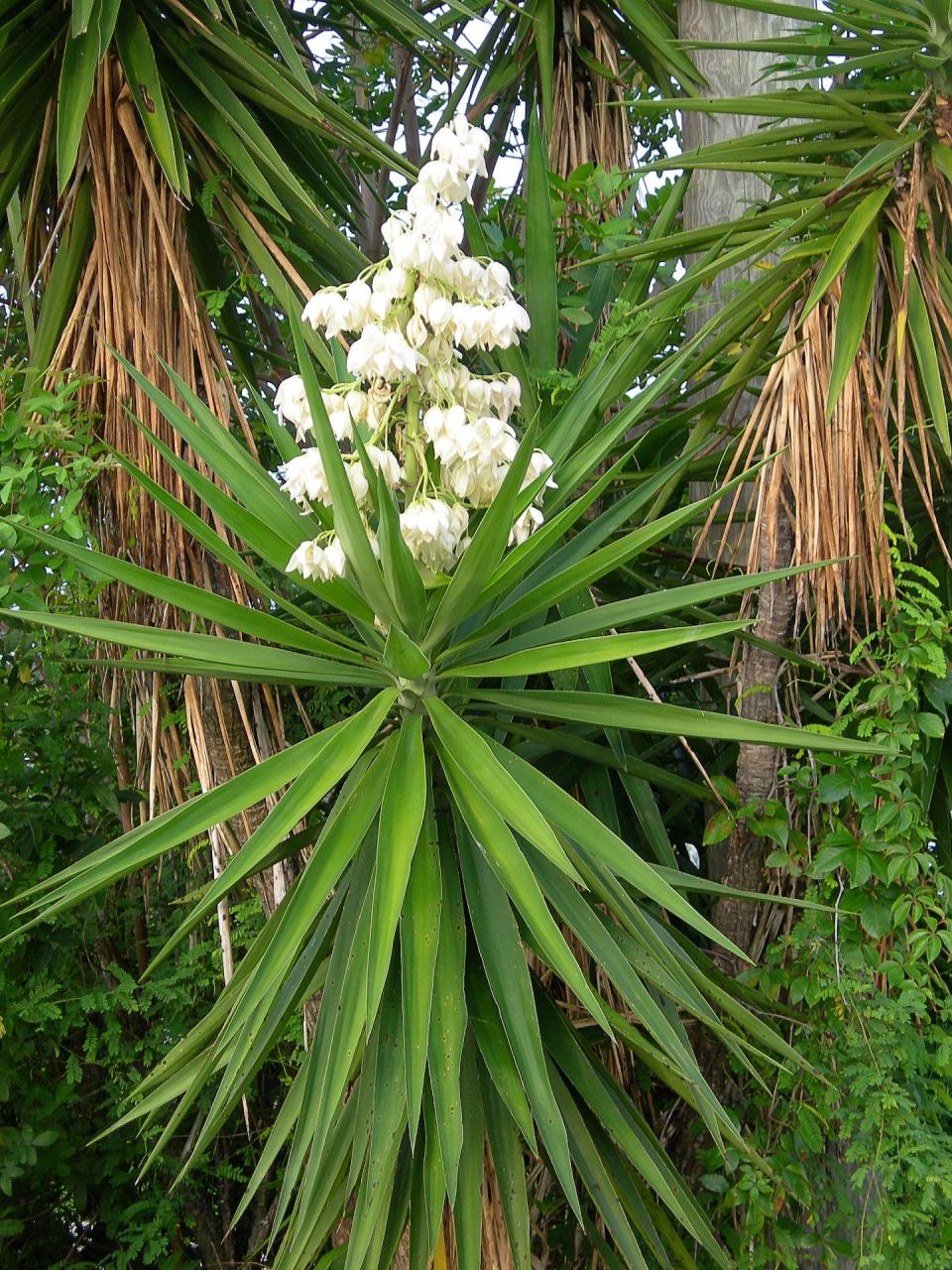Florida gardening: How and where to grow the wonder plant Spanish bayonet
There is a naturally occurring succulent for the landscape that is bold in silhouette, attracts and feeds pollinators -- moths, butterflies, and hummingbirds -- and can help deter folks from entering the landscape or approaching windows.
This wonder plant is the Spanish bayonet, Yucca aloifolia, and it is an easy-to-grow addition to Central and South Florida landscapes.

Native to the U.S. coasts from Virginia to Florida, west to Texas, and into the Caribbean Islands and Mexico, Yucca aloifolia is cold hardy for the Treasure Coast and grows in USDA hardiness zones 8 – 12. It has upright trunks or stems that branch after flowering. They can reach 5- to 20-feet tall; the larger stems fall over, making a clump of vertical and horizontal plants that provide a protective home for songbirds and other wildlife.
The leaves are stiff, narrow, 2- to 3-feet long, and lance- or dagger-shaped. There is a very sharp spine at the end and minute teeth on the margins. The leaves point up at the top branches and progress all the way through outward to hanging down where old leaves turn brown and form skirts. The sharp spines are strong and can pierce thick clothing and shoes.
The night-fragranced flowers are produced in late spring and summer on pyramidal inflorescences at the ends of the branches; the individual flowers are pendulous or hanging. Each large flower is cup-shaped and white with green or purple tinting at the base of the petals. Dry capsules that don't split follow the flowers and contain thick, black seeds.
The right place to plant a clump of Spanish bayonet is in full sun, though a bit of shade is tolerated. It is not picky about soil as long as it is loose, open, and very well-drained. It is also very salt and drought tolerant.
Pruning is not needed but can be used to remove old flower stalks. Thin the clumps occasionally to control the size, use the removed suckers to propagate yucca and establish new plantings. The skirt of brown leaves is sometimes deemed unattractive; however, it is a natural part of the plants' growth. Use care to remove old leaves and take only loose ones to avoid damaging the trunk. The most common issue with growing Spanish bayonets is overwatering. Wet soils will cause rots.
The Spanish bayonet makes a powerful statement in the landscape. The overall look is coarse and accents any location where planted. It makes excellent screens and borders.
Spanish bayonet does a nice job of limiting access; the sharp spines and leaf edges repel all intruders; use it with care along walkways and areas where children play and people walk. Planting less dangerous plants between walkways and byways and this yucca is recommended.
An attractive plant with a lineage that has changed. It was once classified in the plant family Agavaceae; it is now classified in Asparagaceae. A fact that now makes sense when looking at historical uses.
In addition to landscape use, the roots were used to make soap and shampoo, and the leaf fibers for rope and string. The flower petals are eaten raw and cooked, as are the seeds.
Plant Spanish bayonets for beauty and protection and the ability to adapt to many locations.
Carol Cloud Bailey is a landscape counselor and horticulturist. Send questions to carol@yard-doc.com or visit www.yard-doc.com for more information.
This article originally appeared on Treasure Coast Newspapers: The Spanish bayonet is an easy-to-grow wonder plant

